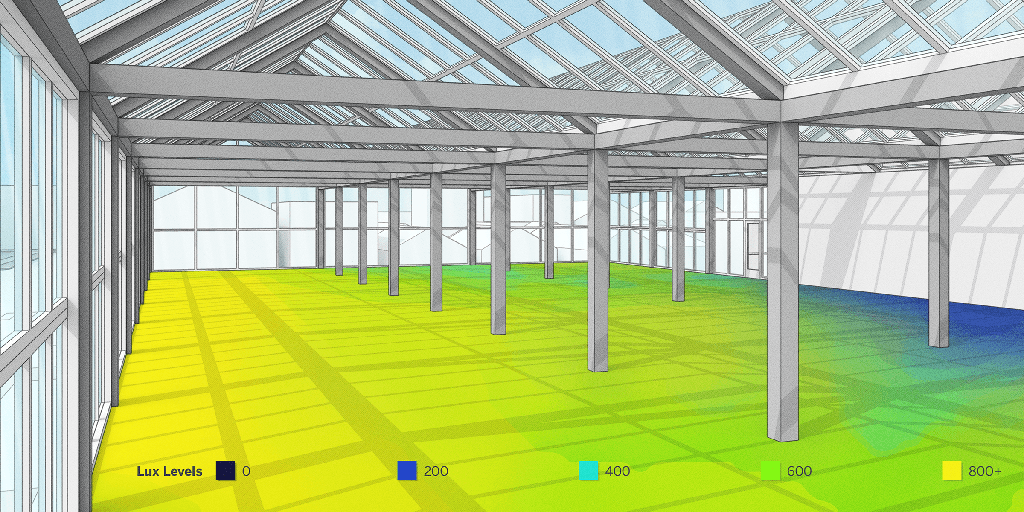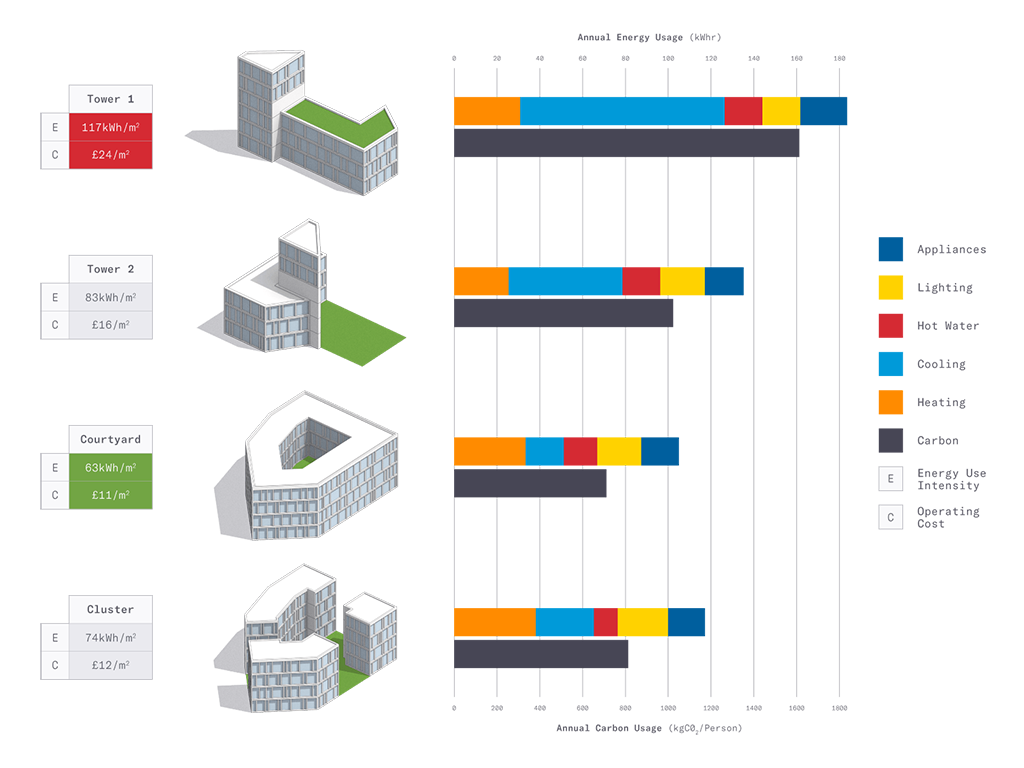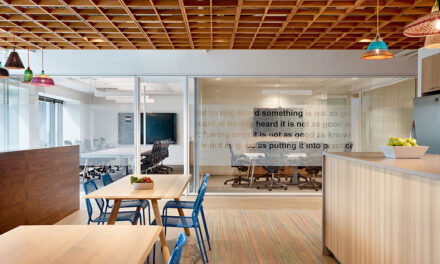The paradox of early design is that architects have to make the most critical decisions when they have the least time to evaluate them thoroughly. This is especially true when it comes to building performance and sustainability.
While there are many 3D modeling and building analysis tools on the market, not all are well suited for the conceptual stage, when designers should be considering environmental and performance factors. Making these increasingly important decisions requires the ability to explore different concepts nimbly and with ease, without fully defined parameters.
Architects and designers today must consider how a building sits in its context. Each location on the globe has a unique climate to which buildings need to respond, and a cultural heritage they need to complement. When considering sustainability, there is also the matter of materiality. Should materials be imported from thousands of miles away, or can one source local materials and keep embodied carbon down? These are some considerations an architect must think through, ideally in the conceptual phase of design.
To add to the complexity, key project stakeholders, such as engineers or sustainability specialists, often join the conversation later, due to budget reasons, after early decisions have been made. Architects often look to engineers for early feedback on performance; unfortunately, most engineering software is not designed for such early-stage analysis. This means that engineers are often hard-pressed to keep pace with frequent design changes. To mitigate these bottlenecks, most larger architecture firms have an in-house specialist or team of specialists with unique building performance expertise. However, like the engineer, they sometimes struggle to provide feedback quickly enough to match the design pace.
A Different Way of Working
While aiming to balance time, cost and quality in each project, architects are also increasingly expected to design buildings that are good for the environment. Although important, the ease of accomplishing this type of evaluation early in the design process creates a significant barrier. Often, this evaluation is left for an engineer to handle later in the process after the architect has completed numerous design options, modeled the concept in 3D and received client approval. A week or more on, the engineer assesses that, in its current state, the proposal will require too much energy to operate. The problem? At this point, the design is almost fully baked! The client has become attached to the concept and the architect has already invested a significant amount of brainpower and time. He or she is understandably reluctant to backtrack and start from scratch.
Fortunately, technology advances in building performance analysis tools now allow architects to investigate how a concept would use energy earlier than ever. They can answer questions such as, “How much electricity or solar power is needed to run the proposal efficiently?” This includes the ability to evaluate heating and cooling loads, as well as lighting and appliances.
With these accessible and user-friendly analysis tools, a designer can assess and optimize their designs to consider energy use, evaluating how much daylight comes into a building to determine the ideal size of its HVAC system. In this scenario, when the architect begins to work with a mechanical engineer or sustainability specialist later in the process, they’re already headed in the right direction. This early-stage effort eliminates a significant amount of re-work. By integrating performance analysis earlier in the process, the design team also increases the chances of meeting building regulations and code requirements and achieving sustainability ratings, such as LEED.
A Smarter Way to Specify
Specifying the right materials can be challenging but it is crucial for several reasons. Building materials have a great impact on both capital and operational costs, as well as overall energy and thermal performance. Early-stage analysis tools greatly support the specification process by allowing architects to test and compare material variables for different building elements with incredible speed. By providing insights into the impact of material properties such as glass U-values, roof R-values, insulation and construction type, early-stage analysis tools empower designers to specify the right materials. These intelligent tools only require basic information about the building, including its location, typology, hours of use and occupancy.
An architect can use these tools to drive sustainability by:
Identifying the ideal form and orientation. For many building types, form and orientation can have a significant impact on energy use. This is because a building’s shape and its related surface-area-to-volume ratio determine how much of its envelope is exposed to the environment. The orientation of this exterior surface area also determines how much solar gain the building receives. These factors can be combined to capture warming sun during cold months or keep out glare during hotter months, buffering against a harsh climate or opening up to a pleasant one.
Optimizing the façade. A building’s façade is its primary aesthetic expression and the primary interface between its interior and exterior. Its design has a major impact on energy use, thermal comfort and indoor environmental quality. Glazing is often the weakest link on façades in terms of heat gains and losses through the envelope. However, designing an energy-conscious façade is more than simply finding the right glazing ratio — it is a matter of finding the best combination of glazing amount, type, and location paired with the right shading strategies.
Holistically designing for natural ventilation. Natural ventilation is an effective strategy for many different building types across varying climate regions. However, architectural decisions need to be made early in the design process to make this strategy viable. These architectural decisions include:
- Thermal mass to even out daytime and nighttime temperatures. This affects decisions regarding construction, materiality, and finishes.
- Airflow strategy (e.g. cross-ventilation vs. stack ventilation). This can affect floor plate dimensions, the internal layout of the building, interior partitions and the building’s section, depending on the strategy pursued.
- Operable area sufficient to achieve the requisite airflow.
- Controlling heat gains, including solar, conduction loads and internal gains from lights and appliances.
Optimizing specifications. The components of a building’s envelope can be optimized to minimize energy use and improve indoor environmental quality. The optimal specifications for windows, walls and roofs vary – not only by building type and climate, but also by the building’s design. These recommendations must take into account the building’s form, orientation, shading strategies, glazing ratios, et cetera. More is not always better when it comes to these characteristics. For instance, it is possible to have windows that are “too good” — they keep out the sun’s heat even when it would be beneficial. Understanding how these properties behave in a particular design is critical to identifying the most important places to invest in high-performing materials.
In Practice: Examples of Early Stage Building Performance Analysis
Using a 3D modeling tool, such as SketchUp, that offers building performance analysis, architects can quickly create simple shoebox models to leverage analysis during concept and schematic stages. This allows architects to compare design options and iterate to optimize ideal building specifications. It is important to note that models at this stage do not have to be detailed. Simple models can provide useful information with minimal effort and allow for rapid exploration of many options.
Consider a building’s U-Value as an example. The U-Value characterizes the thermal transmittance of a material. The lower the U-Value, the greater the material’s resistance to heat flow and thus, the better its insulation properties. Armed with a specific U-value, or an acceptable range for great building performance, a generalist designer can intelligently steer material conversations with manufacturers and confidently select the right products. The knowledge gained during early-stage analysis drives the decision making for which materials will be specified for the building.
Some 3D modeling tools, such as SketchUp, allow designers to select specific wall and roof types. These choices ultimately impact a building’s performance, thus their relevancy is vital. For example, a designer could select a timber, steel frame or concrete structure, and these tools will indicate how each option will impact performance values. Ultimately, these tools can provide some of the answers needed to set a building in the right direction and design what is best for the client, their budget, and the environment.
To illustrate, Inscape Publico, a nonprofit architecture firm, was commissioned to do just that. The client, Mi Casa, is a nonprofit organization that provides affordable housing opportunities to low and moderate-income families. They sent Inscape Publico a brief to design a Net Zero affordable housing prototype for six housing units spanning two separate blocks in Washington, DC.
The firm had to work with the project’s limited budget, a limited palette of building materials, and a tight timeline. Using SketchUp’s Sefaira for early-stage building performance analysis, the team optimized the project’s malleable factors. In the end, it demonstrated that the project was on track to achieve Net Zero energy status.
To achieve its goals, the design team needed to:
- Calculate the baseline building performance based on established building materials.
- Minimize energy consumption to achieve net-zero by utilizing high-performance building construction and specifying high-efficiency appliances and systems.
- Calculate how much renewable energy would be generated by pre-specified solar photovoltaic panels, to confirm the quantity required to achieve net-zero.
- Minimize annual operating costs for the inhabitants by specifying highly efficient water fixtures.
The design team set up an analysis model, inputting the predetermined envelope, HVAC values, and baseline variables such as occupancy, lighting power density, plug load, temperature setpoints and diversity factors. Next, potential strategies were investigated:
- Shading type and depth: Using Sefaira’s response curves, an optimum 2.5ft deep horizontal projection was specified over each glazed opening, reducing annual space cooling by 14 percent.
Water fixtures: To reduce waste and operating cost, high-efficiency water fixtures were specified, reducing annual operating costs by 37 percent. Less energy was required to heat water and water usage was lower overall.
By specifying high-performance values for shading and water fixtures, the design team ensured that the final annual energy consumption figure would be as low as 21,372kBTU/year for Minnesota Street and 21,073kBTU/year for 27th Street).
Once they optimized the building envelope for performance, the next step was to offset the energy consumed by generating as much energy as possible on site. Predetermined solar PV specifications were input into Sefaira to calculate the expected output and confirm that Net Zero energy consumption was possible.
Sefaira results confirmed that two arrays of 18 photovoltaic panels per block would generate 21,473kBTU/year for Minnesota Street and 22,025kBTU/year for 27th Street, thereby ensuring the project would achieve net-zero energy status.
Stefan Schwarzkopf, Design Director at Inscape Publico, said, “I would use Sefaira at an even earlier stage to optimize the envelope instead of simply analyzing the materials and details we had already established. For example, the predetermined roof assembly R-value was quite high; however, Sefaira showed that a roof assembly with a lower R-value performed just as well. Knowing this information earlier on could have enabled the team to make more cost-effective building material and detailing choices.”
Sefaira enabled the team of Inscape Publico and Mi Casa to calculate the annual energy consumption, investigate energy-saving strategies, and apply renewable energy generation, helping the project reach Net-Zero energy status.
Wouldn’t it be great if, like the Inscape Publico and Mi Casa project, great designs translated from paper to reality as buildings that are beautiful, fit-for-use, high performing, resource-efficient, and resilient? It is an ambitious mandate but one that architects and designers are well equipped to embrace and execute over time.
About the author
 Sumele Aruofor, RIBA Associate, Strategic Manager of Architecture & Sustainability at Trimble, SketchUp
Sumele Aruofor, RIBA Associate, Strategic Manager of Architecture & Sustainability at Trimble, SketchUp
Sumele Aruofor (RIBA Associate) uses her training and experience in architecture, interior architecture, and building performance design to create content that enables professionals in the AEC industry to leverage innovative technologies for better design and a more sustainable built environment. She applies this knowledge in her role as Strategic Manager of Architecture & Sustainability at Trimble, SketchUp and in the design of residential projects in the UK.










